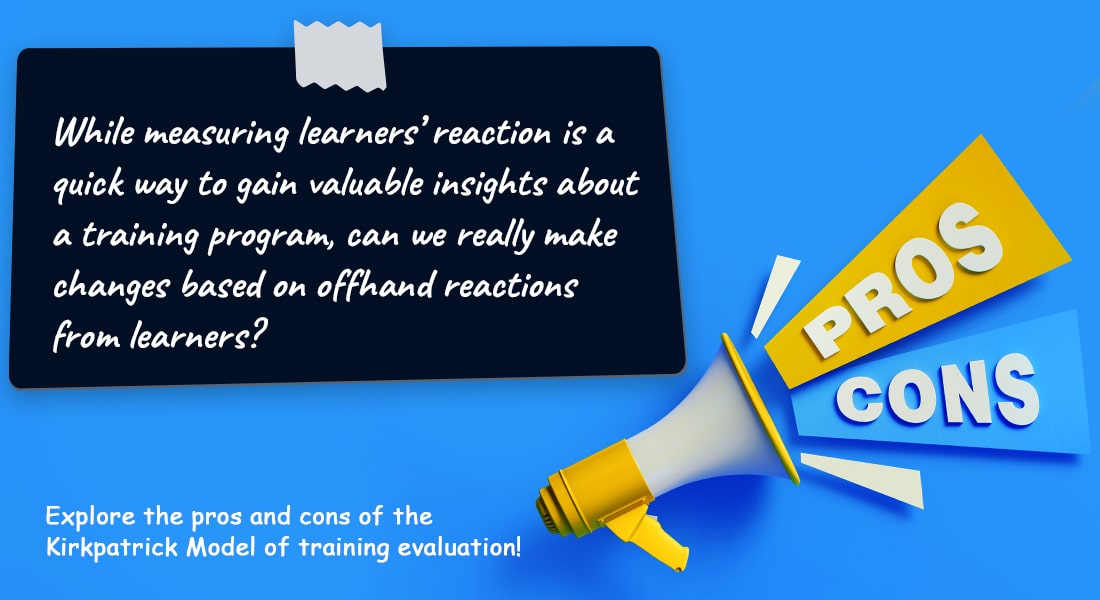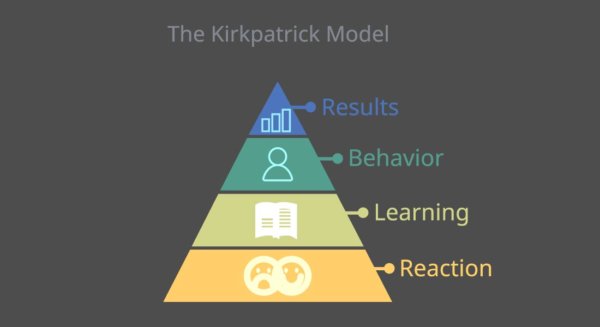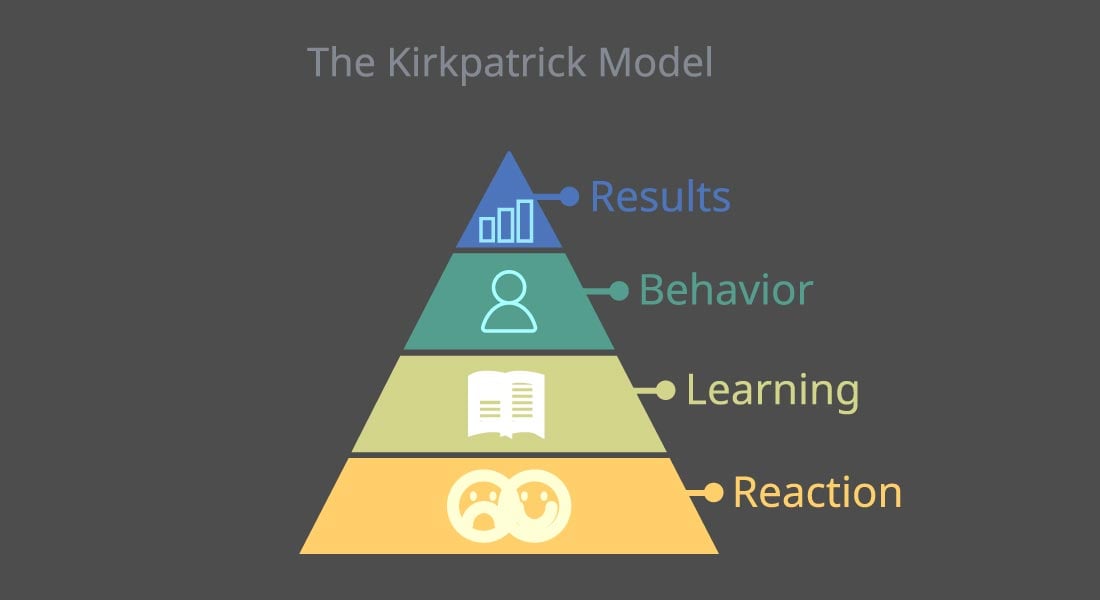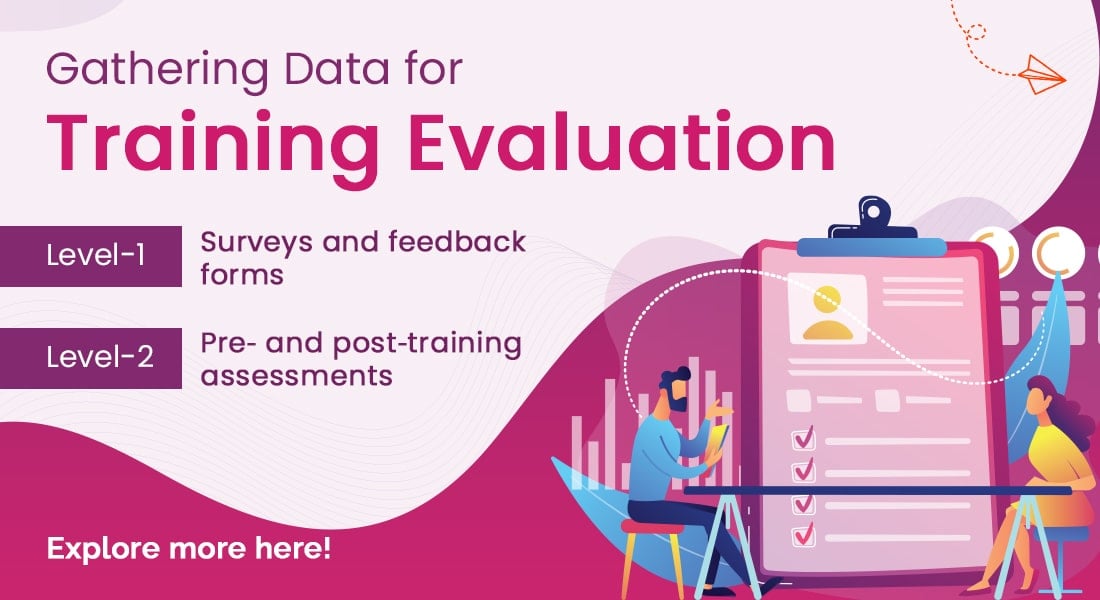Is Kirkpatrick’s Really the Best Model to Evaluate a Training Program? The Pros and Cons

This is the third blog in the series on Kirkpatrick’s Model of Evaluation. In the first part, we discussed the need for evaluating any training program and then gave an overview of the Kirkpatrick model of training evaluation. The second part of this series went a little deeper into each level of the model.

This blog will look at the pros and cons of the Kirkpatrick Model of Training Evaluation and try to reach a verdict on the model.
Benefits of the Kirkpatrick’s Model of Training Evaluation
The eLearning industry relies tremendously on the 4 levels of the Kirkpatrick Model of evaluating a training program. Here’s what we know about the benefits of the model:
- It can be used to evaluate classroom training as well as eLearning.
- It provides a logical structure and process to measure learning.
- When used in its entirety, it can give organizations an overall perspective of their training program and of the changes that need to be made.
- The model has been used to gain deeper understanding of how eLearning affects learning, and if there is a significant difference in the way learners learn.
Pros of the Kirkpatrick’s Model of Training Evaluation
Level 1: Reaction – Is an inexpensive and quick way to gain valuable insights about the training program.
Level 2: Learning – Provides an accurate idea of the advancement in learners’ KSA after the training program.
Level 3: Behavior – Offers tangible proof of the newly acquired KSAs being used on the job.
Level 4: Result – Measures the impact of the training program on business results.
But as with everything else, there are pros and cons for each level of this model.
Pros and Cons of the Kirkpatrick’s Model of Training Evaluation
Level 1: Reaction
The Pros
The main advantage? It is a cheap and quick way to gain valuable insights about the course. (If learners are happy, there is a greater chance of them learning something. If they are unhappy, there is a chance that they learned very little, or nothing at all.)
The Cons
The biggest argument against this level is its limited use and applicability. Evaluation is superficial and limited only to learners’ views on the training program, the trainer, the environment, and how comfortable he/she was during the program. Very often, reactions are quick and made on the spur of the moment without much thought.
And so, it would not be right to make changes to a training program based on these offhand reactions from learners.
Level 2: Learning
The Pros
Level 2 evaluation is based on the pre- and post-tests that are conducted to measure the true extent of learning that has taken place. This provides trainers and managers an accurate idea of the advancement in learners’ knowledge, skills, and attitudes after the training program.
Explore tips to design performance-based assessments.
The Cons
Conducting tests involves time, effort, and money. And a lot of organizations do not want to go through this effort as they deem it a waste of time.
Level 3: Behavior
The Pros
This level assesses the number of times learners applied the knowledge and skills to their jobs, and the effect of new knowledge and skills on their performance – tangible proof of the newly acquired skills, knowledge, and attitudes being used on the job, on a regular basis, and of the relevance of the newly acquired skills, knowledge, and attitudes to the learners’ jobs.
The Cons
Firstly, it is not very easy to gather accurate information. To carry out evaluation at this level, learners must be followed up regularly – which again is time consuming and costs money. And it won’t stop there – there would need to be an in-depth analysis conducted into the reasons for failure.
Managers need to take charge of the evaluation at this level, and they often don’t have the time or inclination to carry it out.
Level 4: Result
The Pros
This level measures the success of the training program based on its overall impact on business.
The Cons
It is difficult to clearly and with 100% accuracy link a particular training to business results. This would need a lot of analysis and expertise and therefore would work out to be more expensive. And most organizations are reluctant to spend the required time and effort on this level of evaluation.
So, What’s the Verdict?
Is Kirkpatrick Model of Training Evaluation really the best method to evaluate a training program?
If you look at the cons, most of them are to do with three things – Time. Money. Effort.
There is also another component – an attitudinal component – of not wanting to take the trouble of analyzing the effectiveness of a training program, what made it a success or a failure, and how it could be bettered.
For example, Level 3 evaluation needs to be conducted by managers. But most managers don’t take training seriously enough to think it warrants this level of evaluation. And it all boils down to this one question. Do the people who don’t want to follow the Kirkpatrick Model of Evaluation really care about their employees and their training?
Here is a model that when used – as it is meant to be used – has the power to provide immensely valuable information about learners, their needs, what works for them and what doesn’t, and how they can perform better. Time, money, and effort – they are big on everyone’s list, but think of the time, money, and effort that is lost when a training program doesn’t do what it’s supposed to. So yes, this model is still one of the most powerful tools used extensively by the ones who know.
There was someone though who instead of just finding loopholes in this model, actually found a way to add to the Kirkpatrick model – Dr. Jack Phillips. The Phillips Model adds the fifth level – Return on Investment – to the four levels of Kirkpatrick Model of Evaluation.
We will next look at this model and see what it adds to the Kirkpatrick model. All this and more in upcoming blogs.





